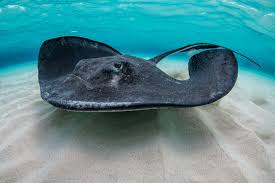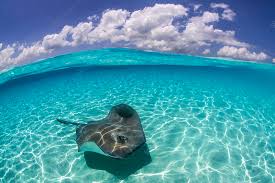Understanding the Risks: Are Stingrays Dangerous to Humans and How to Stay Safe in Their Habitat?
Stingrays, members of the elasmobranch family along with sharks, skates, and other rays, have long intrigued humans with their graceful movements and distinctive appearance. However, their potential danger to humans is a topic that often generates concern and curiosity. While stingrays can be dangerous under certain circumstances, understanding their behavior, habitat, and interactions with humans can provide a clearer picture of the risks they pose.
Anatomy and Defense Mechanism
Stingrays are easily recognizable by their flattened bodies and long, whip-like tails. These tails house their primary defense mechanism: one or more venomous barbed spines. These spines can inflict painful wounds and, in rare cases, cause serious injury or even death. The venom of a stingray contains proteins and other compounds that can cause intense pain, swelling, muscle cramps, and in some cases, more severe systemic effects such as nausea, vomiting, and difficulty breathing.
However, it’s essential to note that stingrays do not typically use their spines offensively. These spines are primarily for defense against predators. When threatened, a stingray can lash out with its tail, embedding the spine in the attacker. For humans, this usually occurs when a stingray is accidentally stepped on, leading the animal to defend itself.

Combing the sand for food
Incidence of Stingray Injuries
Stingray injuries to humans are relatively rare and often occur in shallow coastal waters where stingrays bury themselves in the sand to camouflage from predators and hunt for food. Most injuries are the result of accidental encounters, typically involving swimmers, waders, or fishermen who inadvertently step on a hidden stingray.
According to various studies and incident reports, the majority of stingray injuries are not life-threatening. They often result in puncture wounds that, while painful and requiring medical attention, do not lead to long-term health issues. However, there are exceptions, particularly if the spine punctures vital areas of the body or if the wound becomes infected.
One of the most well-known stingray-related fatalities was the death of Australian wildlife expert Steve Irwin in 2006. Irwin was struck in the chest by a stingray spine, which pierced his heart and caused fatal injuries. This incident, while tragic, is extremely rare and highlights the importance of understanding how to safely interact with marine life.
Prevention and First Aid
Preventing stingray injuries involves a combination of awareness and caution. When wading or swimming in areas known to be inhabited by stingrays, the “stingray shuffle” is a recommended practice. This involves shuffling one’s feet along the sandy bottom instead of taking steps. The motion helps alert stingrays to human presence, giving them a chance to swim away rather than reacting defensively.
If a stingray injury occurs, immediate first aid is crucial. The first step is to immerse the affected area in hot water (not scalding) for 30 to 90 minutes. The heat helps neutralize the venom and alleviate pain. It’s also important to clean the wound thoroughly to prevent infection and seek medical attention, as further treatment or removal of the spine fragments may be necessary.
Conservation and Human Interaction
Despite the potential dangers, stingrays are generally not aggressive towards humans. They play a vital role in marine ecosystems, contributing to the balance of species and health of ocean habitats. Many stingray species are currently facing threats from habitat destruction, pollution, and overfishing. Consequently, conservation efforts are essential to protect these fascinating creatures and ensure their survival.
Human interactions with stingrays have also become popular in eco-tourism, particularly in places like the Cayman Islands’ Stingray City. Here, visitors can interact with southern stingrays in a controlled and safe environment, under the guidance of professionals. These interactions, when conducted responsibly, can foster a greater appreciation for marine life and support conservation efforts.

The Southern stingray
Conclusion
Stingrays, while equipped with a formidable defense mechanism, are not inherently dangerous to humans. Most stingray injuries result from accidental encounters and can be prevented with simple precautions. Understanding their behavior and respecting their natural habitat are key to minimizing risks. With proper awareness and conservation efforts, humans and stingrays can coexist peacefully, allowing us to appreciate these remarkable creatures without fear.
In summary, stingrays’ potential danger to humans is relatively low when compared to other marine threats. Their injuries, though painful, are rarely fatal and usually result from human error or ignorance. By fostering a respectful and informed approach to marine life, we can enjoy the beauty and diversity of our oceans while minimizing the risks to ourselves and the creatures that inhabit them.
